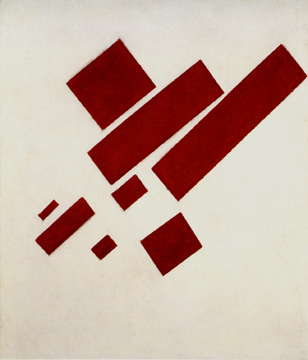To mark the anniversary of the first Russian Revolution, this week’s picture is Kazimir Malevich’s Suprematist Painting: Eight Red Rectangles. Painted in 1915, it is one of the earliest abstract paintings and was part of a group of works intended by the artist to proclaim the imminent advent of a new world order. When the revolution came two years later, Malevich saw it as part of the fulfilment of his prophecy. He was to be bitterly disappointed by the reality of the Marxist-Leninist state. But the exuberantly rebellious idealism of his youth still survives, in however compressed and opaque a form, in the geometrical shapes of his “Suprematist” art.
Malevich was extremely secretive while working on his first Suprematist canvases. No one was to know of his great invention. He kept the door to his studio locked at all times and colleagues in the Moscow art world joked that he must have painted his pictures in the dark. He might as well have done, according to his early critics, who were scandalised by the emptiness of this new art. “I have only a single bare and frameless icon of our times,” was Malevich’s riposte to the traditionalists, “but my happiness in not being like you will give me the strength to go further and further into the empty wilderness. For it’s only there that transformation can take place.”
He was educated in Moscow, where, as an aspiring young painter, he came into contact with most of the dominant styles of avant-garde European art. He produced a number of accomplished figurative paintings in various idioms before taking his leap into “the empty wilderness”. Thanks to the feverish, quasi-mystical tone of his various manifestos, it has proved difficult to determine, with certainty, just where he hoped that leap might take...


